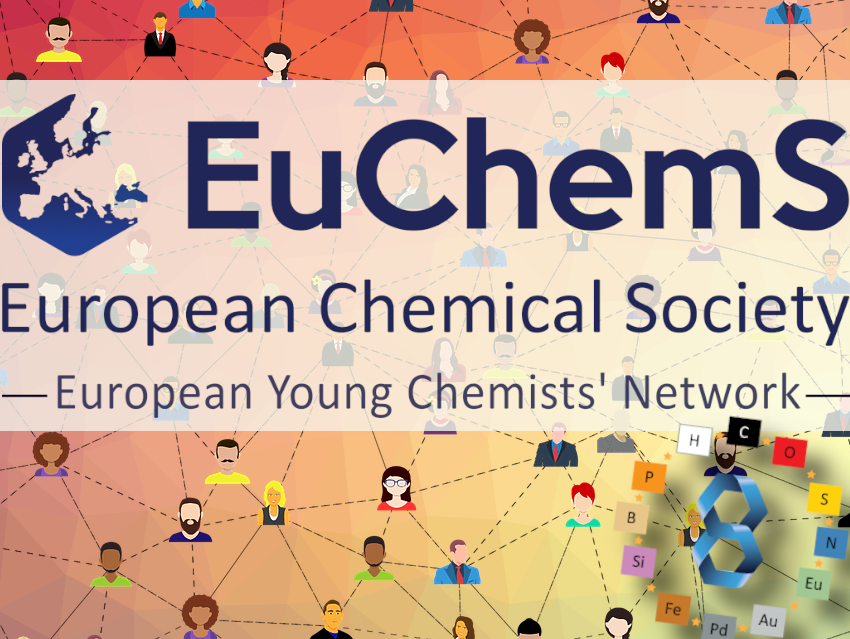Two years of conference cancellations and delays kept us all longing for in-person meetings and interactions. The flagship conference of the European Chemical Society (EuChemS), the 8th EuChemS Chemistry Congress (ECC), hosted by the Portuguese Chemical Society (SPQ) in Lisbon, was also affected and had to be delayed by two years. It finally took place at the end of August/beginning of September. The atmosphere at the meeting was characterized by the joy of finally meeting in person again.
The conference program is always accompanied by the European Young Chemists’ Network (EYCN) program, which is organized by young chemists for young chemists and includes topics such as soft skills, career tips, and science communication as well as the finalists of the European Young Chemists Award. “Providing essential career development skills cannot wait for two years, even in a pandemic!” This was our reasoning to withstand this delay and to provide the key elements of our originally planned young chemists’ program in an online format in 2020 [1]. It was very well received, but of course, it is not the same as meeting in person.
Despite the success of the electronic e-YCN@ECC program, we have longed for personal contact, and discussions over lunch or a cup of coffee are still sorely missed in online formats. Especially for young chemists, it is important to build up our network, to exchange experiences, to learn from each other, and to make friends. Of course, this works much better when you sit next to each other.
The congress program featured numerous exciting sessions [2]. In this article, I will look back at some of the highlights of the ECYN’s program, which particularly kept me discussing and thinking during the event’s coffee and lunch breaks as well as long after the event has ended. Mainly, these were the importance of networking and communication and many tips on how to best do it as well as the transition to more open, diverse, and fair processes in our scientific practices.
Bonding for Impact
The first session informed about organizations involved in ECC and helping chemists of all age groups to connect and facilitate networking activities: EuChemS, EYCN, the International Union of Pure and Applied Chemistry (IUPAC), and the International Younger Chemists Network (IYCN). Nineta Hrastelj (Secretary-General of EuChemS), Maximilian Menche (Chair of the EYCN), Javier Garcia-Martinez (President of IUPAC), and João Borges (Past Chair of the IYCN) shared a selection of their organizations’ recent activities and their personal experiences and tips for networking.
A personal highlight for me that was incorporated into the session was the award ceremony for the Chemistry Rediscovered video competition, hosted with the support of the Wilkinson Charitable Foundation, which brought members of the winning teams to Lisbon. The video competition invited all young chemists and interested people 12–35 years of age to send in their creative videos with the theme “Safety in Chemistry”.
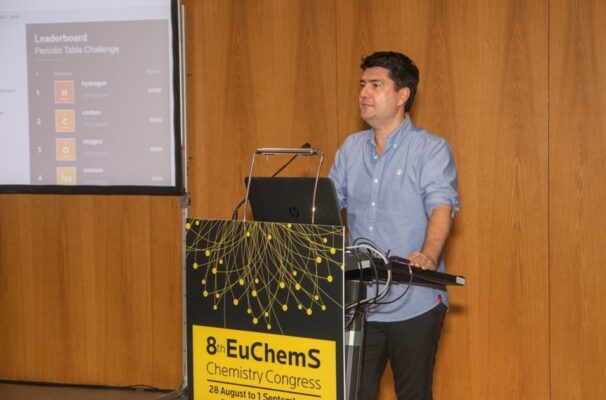
Javier Garcia-Martinez, President of the International Union of Pure and Applied Chemistry (IUPAC), shares his networking experiences (Photo © SPQ).
Open Science
Open Science is a topic that has been strongly growing in attention and importance in the past years. We were thrilled to see such a high-level panel with us in this session: Alina-Maria Tomoiaga (European Research Council), Laura Fisher (Royal Society of Chemistry Publishing), Wolfram Koch (German Chemical Society), and Floris Rutjes (EuChemS). In the session, aspects relevant to researchers, publishers, funding agencies, and chemical societies were brought closer to the audience, and the panelists shared their insights on various questions.
All panelists stressed that open science should not be equated with open access and elaborated on some other important aspects like open code, open data, or open review. For example, the speakers highlighted the importance of a transparent and honest evaluation process for grants as well as publications in order to facilitate trust and fairness in these processes. Such efforts could significantly contribute to the reduction of intentional and implicit biases and help make chemistry a more inclusive and productive environment.
Some changes require significant amounts of time before these transitions are finalized, since many actors and decade-old habits are involved. This is further amplified by the fact that appropriate measures might differ for the various fields of chemistry, based on their current sharing practices and reproducibility aspects. While providing analytic data (e.g., with crystal structures in the Cambridge Structural Database of the Cambridge Crystallographic Data Centre) has become more and more common practice, a differentiation might need to be discussed for other aspects (e.g., experimental vs. computational work).
After Alina-Maria Tomoiaga had also stressed the importance for funding agencies to make publicly funded research publicly available in her presentation, the question was brought up whether this might require a more general adaption of the publication landscape, as the current efforts with open-access publishing typically focus only on the successful parts of publicly funded research. However, all experiments and insights of a publicly funded project might be interesting for other researchers and might help to achieve further scientific progress. This was mainly met with agreement by the panel, however, it will make the whole transition even more complex. The complexity and the necessary aspects that still need to be clarified were exemplified by the fact that the panelists and some members of the audience continued to discuss for many minutes after the session had ended.
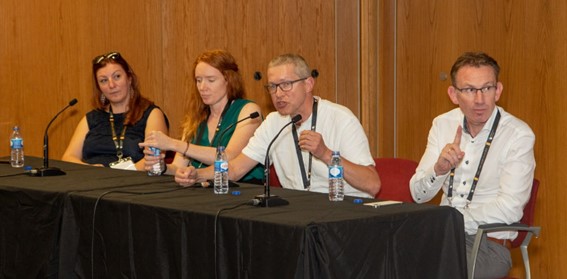
The four panelists Alina-Maria Tomoiaga, Laura Fisher, Wolfram Koch, and Floris Rutjes (from left to right) discuss various aspects of open science (Photo © SPQ).
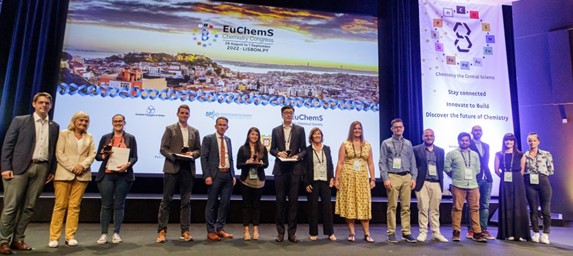
Finalists of the European Young Chemist Award (EYCA) and representatives of EuChemS and EYCN at the award ceremony during the closing session of the congress (Photo © SPQ).
CV and Research Grant Workshops
An essential training, which we regularly try to offer early-career researchers, is directed at the application process for research grants, often focusing on the Marie Skłodowska-Curie Actions (MSCA) and the grants of the European Research Council (ERC). It provides prospective applicants with the resources, statistics, and tips on submitting a successful grant proposal.

David Marçal (MSCA National Contact Point Portugal, left) and Alina-Maria Tomoiaga (ERC, right) in their introductory presentations on the Marie Skłodowska-Curie Actions (MSCA) and the grants of the European Research Council (ERC) (Photo © SPQ).
Alice Solda and Federico Bella shared guidelines for early-career researchers on how to write a meaningful and successful CV, either for industrial applications or for progressing in an academic career. They highlighted the importance of tailoring your CV to each individual application and how strongly a successful application usually differs for both fields.
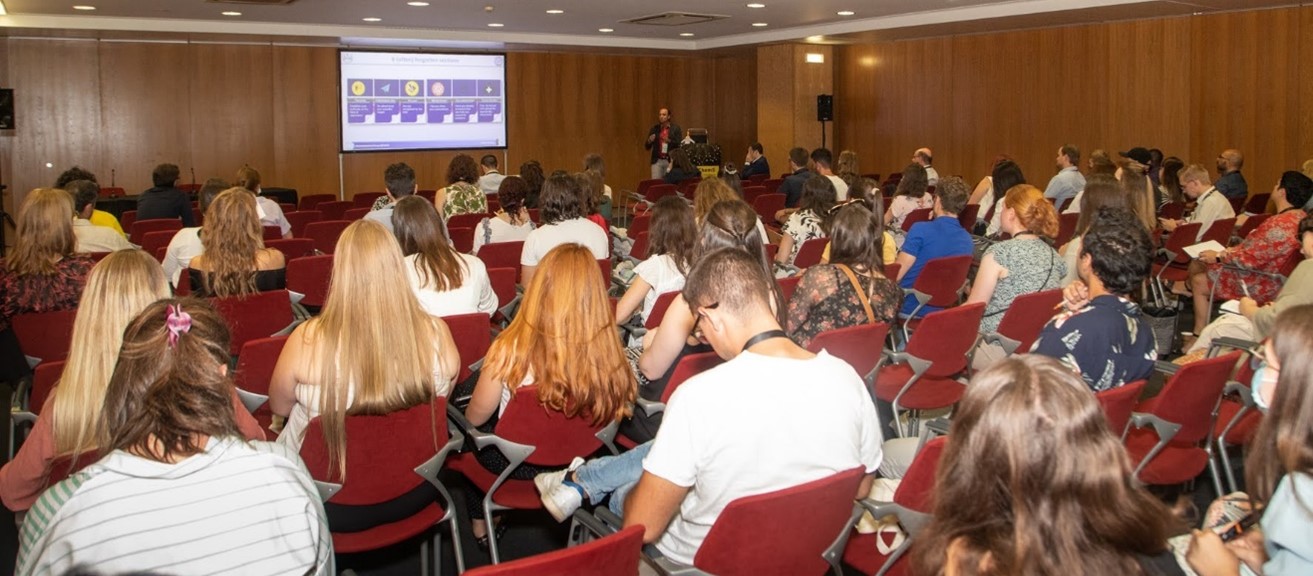
High attendance during the CV session with Alice Solda and Federico Bella (Photo © SPQ).
Science Communication
Last but not least, a session with experts with years of experience in the field of science communication stressed the importance of the field and summarized current challenges and problems. The session was moderated by Fernando Gomollón-Bel (Past EYCN Chair turned science communicator) and featured Bárbara Pinho (Freelance Communicator), Laura Howes (C&EN), and Carmen Bretón Beltrán (Vaya Elementos).
Fernando Gomollón-Bel highlighted the fact that science communication and outreach is far from a new development. For example, Michael Faraday already delivered his Christmas lectures over a century ago to educate the general public and, at the same time, build trust in science. The success and reception of this series are illustrated by the fact that it is continued to this day and many other outreach activities have joined it in the past years and decades.
Carmen Bretón Beltrán co-organizes Vaya Elementos, a student-led outreach initiative from Universidad de La Rioja, which organizes lectures and workshops for the general public. This initiative is a positive example for all of us to engage in similar activities, whether through the many programs of chemical societies or otherwise.
Laura Howes and Bárbara Pinho continued with explaining the daily life and editorial process of (freelance and magazine) science journalists and communicators and provided the audience with recommendations to get their science out into the public. Specifically, they stressed that it is highly recommended to be proactive. Whether promoting your work on social media, and thus, drawing the attention of a science journalist to the topic or by actively reaching out to a journalist or science communicator to explain why your work is of interest to a broader public, being proactive significantly increases your chances of being covered as well as being contacted for comments on other articles.
During the question-and-answer session, one particularly debated aspect was how to ensure that science communication does not only become an amplifier for already well-known and well-funded researchers, who do have the capabilities to pay science communicators to write about their research. The speakers agreed that this can indeed be problematic and needs to be monitored by science communicators, journalists, and publishers to avoid any problematic biases. It is also noted that especially the news reporting aspect, e.g., from editorially independent magazines funded by chemical societies, can be a strong unbiased voice in this regard and help provide a stage for less funded scientists and research.
Additionally, the growing understanding of the importance of science communication by academic institutions also leads to the fact that a growing number of them might provide funding for these activities, and thus, enable more and more researchers to take advantage of professional communicators.
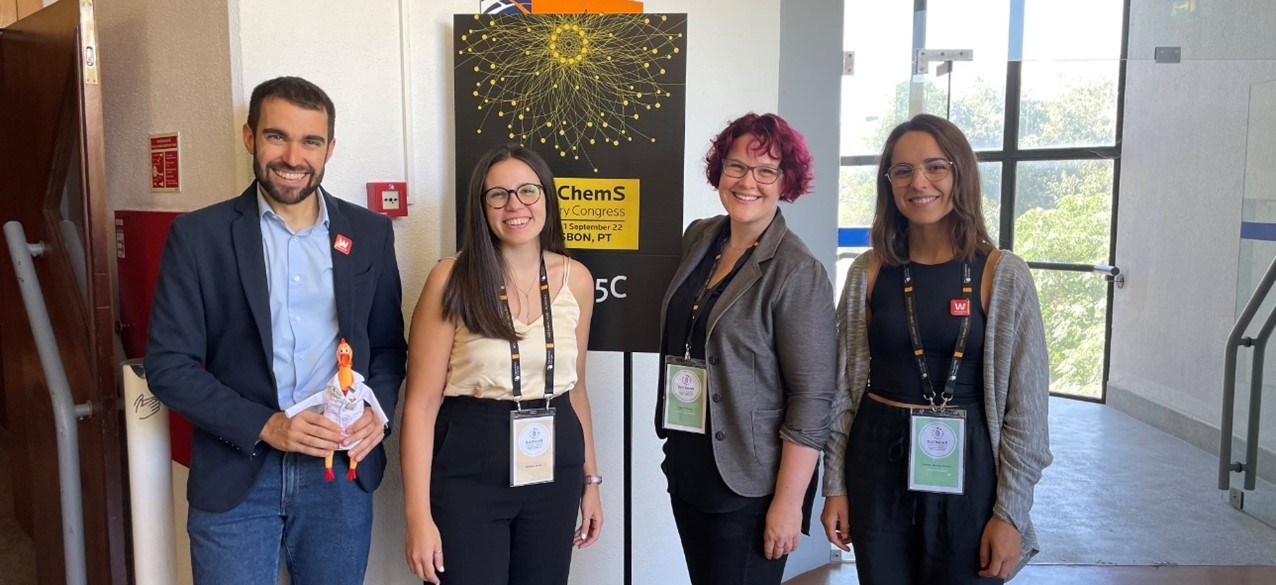
Speakers of the EYCN Science Communication session: Fernando Gomollón-Bel, Bárbara Pinho, Laura Howes, and Carmen Bretón Beltrán (from left to right) (Photo © EYCN).
Diversity and Inclusion
Diversity and inclusion are crucial topics of our time. The program of the EYCN dove into this in another session. It became clear that we still have much to discuss and more to do in the future to address this important topic. For this reason, the EYCN will continue to organize online and in-person discussions on individual aspects of this topic to raise awareness and support.
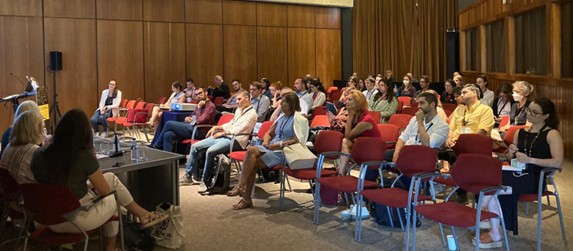
Panelists and audience of the EuChemS-EYCN diversity and inclusion session at ECC8 (Photo © EYCN).
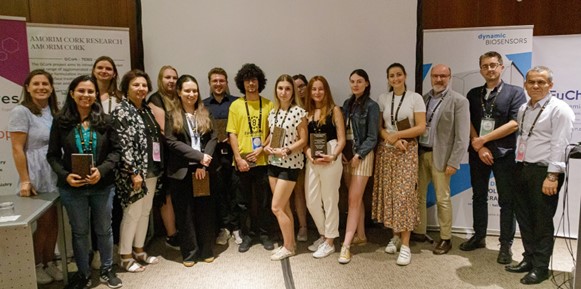
At the EYCN Company Challenge, a real-world problem had to be solved. Participants, company representatives, Luisa De Cola (Chair of the ECC’s Scientific Committee), and Artur Silva (Chair of the ECC and President of the SPQ) (Photo © SPQ).
Looking Ahead!
Keeping all these beautiful experiences in mind, we are delighted about the positive interactions we already had with Celine Marmion, President, and Pat Guiry, Vice-President, of the Institute of Chemistry of Ireland (ICI). The 9th EuChemS Chemistry Congress (ECC9) will take place in Dublin, Ireland, in 2024, and the ICI will be strongly involved in supporting the young chemists’ program at ECC9. See you in Dublin!
References
[1] João Borges, Lori Ferrins, Antonio M. Rodríguez, Maximilian Menche, Dimitra T. Pournara, Katja Väyrynen, Jovana V. Milić, Juan C. Aponte-Santini, A Virtual Journey in Empowering Early-Career Chemists, ChemistryViews 2022. https://doi.org/10.1002/chemv.202100001
[2] Vera Koester, Discussing Chemistry with Friends in Europe, ChemistryViews 2022. https://doi.org/10.1002/chemv.202200076
Also of Interest

Mark Kelada, Ireland, on young chemists’ networks and how a podcast is created
